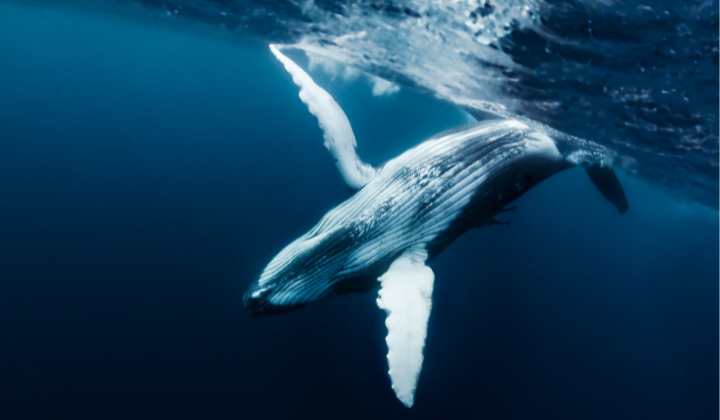
– Manuscript –
Researchers have estimated that blue whales take in about 10 million pieces of microplastics each day.
Microplastics are particles of plastic debris that are less than 5 millimeters long. They come from the breakdown of many kinds of plastic products and industrial waste. Particle levels have been building up in the world’s oceans for many years. The possible health effects on whales from eating microplastics are still not well understood.
Scientists studied three species of baleen whales – blue, fin and humpback. Baleen whales are born without teeth. But they have special plates in their mouths that filter food. They feed on very small animals, mainly the shrimp-like creatures called krill.
A study by the researchers says the estimated 10 million pieces of microplastics blue whales eat daily weigh about 44 kilograms.
The whales were studied off America’s Pacific coast. Research results were recently reported in the publication Nature Communications.
The study found that fin whales may take in up to 6 million microplastic pieces a day. Humpbacks that mostly feed on krill likely eat about 4 million microplastic pieces daily, the researchers said. Humpbacks that favor fish may take in a much smaller amount, about 200,000 pieces a day.
Matthew Savoca was a co-writer of the study. He told the Reuters news agency that about 99 percent of the plastic material came from other animals the whales eat — not from the water they filter.
The study demonstrates the different reasons baleen whales may be at a heightened risk for taking in microplastics. These include the way they feed, the amount of food they eat and the fact that their environment is close to polluted areas.
Blue whales can grow up to 30 meters long. Fin whales can reach 24 meters, while humpbacks are generally about 15 meters.
The researchers estimated the daily microplastic intake by examining the food search behavior of 126 blue whales, 65 humpbacks and 29 fins. They used measurements from electronic tag devices that they attached to the animals’ backs. The device was equipped with a camera, microphone and a GPS tracker. They then considered levels of microplastics that exist in the travel path of the whales.
A study published last year suggested that blue whales off the U.S. Pacific coast eat about 10 to 20 tons of krill daily. Fin whales eat an estimated 6 to 12 tons of krill a day, while humpbacks take in about 5 to 10 tons of krill or 2 to 3 tons of fish daily.
The new study found that the whales mainly feed at ocean depths of 50 to 250 meters. This is within the area with the highest measured microplastic levels in the open-ocean environment.
Words in This Story
species – n. a group of animals or plants that are similar and can produce young animals or plants
filter – v. to pass a liquid or gas through a piece of equipment in order to remove solid pieces or other substances
tag – n. a small piece of equipment used to track the movements of things, people or animals
GPS tracker – n. to follow the movements of something with an electronically-powered piece of equipment
debris – n. broken items or waste material
*This article has been edited and reprinted from VOA Learning English with permission from Voice of America (VOA) for use in English language materials.
